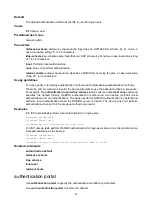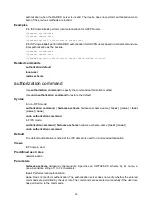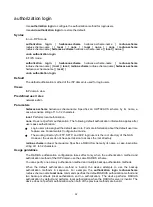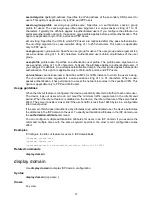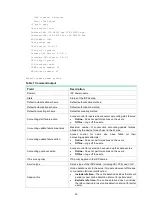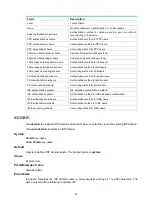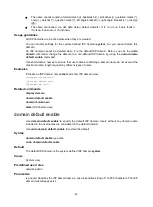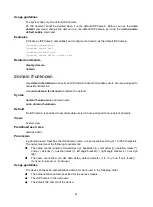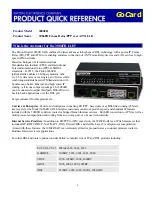
32
authorization login
Use
authorization login
to configure the authorization method for login users.
Use
undo authorization login
to restore the default.
Syntax
In non-FIPS mode:
authorization
login
{
hwtacacs-scheme
hwtacacs-scheme-name
[
radius-scheme
radius-scheme-name
] [
local
] [
none
]
|
local
[
none
] |
none
|
radius-scheme
radius-scheme-name
[
hwtacacs-scheme
hwtacacs-scheme-name
] [
local
] [
none
]
}
undo authorization login
In FIPS mode:
authorization
login
{
hwtacacs-scheme
hwtacacs-scheme-name
[
radius-scheme
radius-scheme-name
] [
local
] |
local
|
radius-scheme
radius-scheme-name
[
hwtacacs-scheme
hwtacacs-scheme-name
] [
local
]
}
undo authorization login
Default
The default authorization method of the ISP domain is used for login users.
Views
ISP domain view
Predefined user roles
network-admin
Parameters
hwtacacs-scheme hwtacacs-scheme-name
: Specifies an HWTACACS scheme by its name, a
case-insensitive string of 1 to 32 characters.
local
: Performs local authorization.
none
: Does not perform authorization. The following default authorization information applies after
users pass authentication:
•
Login users are assigned the default user role. For more information about the default user role
feature, see
Fundamentals Configuration Guide
.
•
The working directory for FTP, SFTP, and SCP login users is the root directory of the NAS.
However, the users do not have permission to access the root directory.
radius-scheme radius-scheme-name
: Specifies a RADIUS scheme by its name, a case-insensitive
string of 1 to 32 characters.
Usage guidelines
The RADIUS authorization configuration takes effect only when the authentication method and
authorization method of the ISP domain use the same RADIUS scheme.
You can specify one primary authorization method and multiple backup authorization methods.
When the default authorization method is invalid, the device attempts to use the backup
authorization methods in sequence. For example, the
authorization login
radius-scheme
radius-scheme-name
local
none
command specifies the default RADIUS authorization method and
two backup methods (local authorization and no authorization). The device performs RADIUS
authorization by default and performs local authorization when the RADIUS server is invalid. The
device does not perform authorization when both of the previous methods are invalid.
Summary of Contents for FlexNetwork MSR Series
Page 1005: ...987 ...




